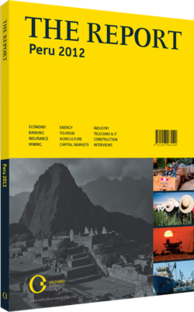Facts for visitors: Handy tips for first-time travellers
SOCIETY & ETIQUETTE: Peruvian culture is almost as diverse as its geography and, indeed, cultural and social norms can often differ markedly between geographical regions. Peruvians are on the whole polite and always happy to help, particularly when it comes to foreign visitors. In Lima and on the coast is where Peru is at its most multicultural and diverse, with a mixture of European, Indigenous, Asian and Afro-Latin influences with an element of the “work hard, party hard” attitude typical to many Latin American countries. While perhaps a little more conservative than other Latin countries, even business meetings in Peru are often preceded by a single kiss on the cheek as a greeting between females and males and females, and often end with an invitation to someone’s house for lunch or to a nearby restaurant or bar. On the surface Peruvians are tolerant and accepting, although an undercurrent of racial discrimination and social marginalisation is still very much a problem. Pleasantries are always exchanged before and after each encounter, and a few words of Spanish will go a long way to winning affection. In the predominantly indigenous sierra or highlands, formed by a spectacular series of Andean mountain ranges, the culture tends to be a bit more conservative and restrained, while the remaining 60% of the country is covered by relatively untouched rainforest and a patchwork of different indigenous groups.
LANGUAGE: Peru is officially a multilingual nation reflecting the wide array of indigenous languages spoken across the country; however, those visiting Peru will only need to know some Spanish. Areas in the highlands often predominantly speak indigenous languages such as Quechua and Aymara, yet apart from the small villages the inhabitants of these areas are mostly bilingual. Some of the better-educated Peruvians in Lima and the main cities and tourist areas will speak English well, but most will not, so a basic understanding of Spanish will almost certainly make your stay in Peru a more pleasant one.
VISAS: Visas are not required for most travellers visiting Peru, except for longer or work-related stays. Visitors from most nations can get a 30-, 90- or, if requested, a 180-day tourist stamp on arrival at the airport or land crossings. On arrival you are also given a tarjeta Andina de migración (Andean Immigration Card), which is stamped upon arrival and exit.
TRANSPORT: Transport infrastructure outside of the major cities can at times be frustratingly slow; however, infrastructure is rapidly being improved as investment pours into the country. In Lima and in the provincial cities mostly informal taxis ply the streets. Fares are almost always negotiated before entering the taxi as metered taxis do not exist. From the airport, it is best to use an official taxi company or remise service. There are a few airlines that serve many destinations in the interior, while for those with time inter-city bus journeys can be a great way to take in the spectacular scenery. Train travel is limited to a few routes and can often be lengthy and uncomfortable.
BUSINESS HOURS: Office hours are generally a standard 9am to 6pm from Monday to Friday, with many businesses open for part or all of Saturday.
CURRENCY: The local currency is the nuevo sol (PEN) which comes in 10, 20, 50, 100 and 200 note denominations. There are 1, 2 and 5 soles coins as well as 5, 10, 20 and 50 centimos coins. US dollars are widely accepted as currency across Peru. At the time of writing the exchange rate was at: $1:PEN2.74, €1:PEN3.95 and £1:PEN4.52. ATMs are widely available in all cities and most take foreign cards, while credit cards are widely accepted.
TIPPING: Tipping is rarely expected in all but high-end places. In top restaurants service charge will often be added to the bill, or if not, it is customary to leave a 10% tip.
ELECTRICITY: Electrical current is 220 V, 60 Hz AC often with dual-voltage outlets accepting both European and American-style round and flat prongs.
You have reached the limit of premium articles you can view for free.
Choose from the options below to purchase print or digital editions of our Reports. You can also purchase a website subscription giving you unlimited access to all of our Reports online for 12 months.
If you have already purchased this Report or have a website subscription, please login to continue.

